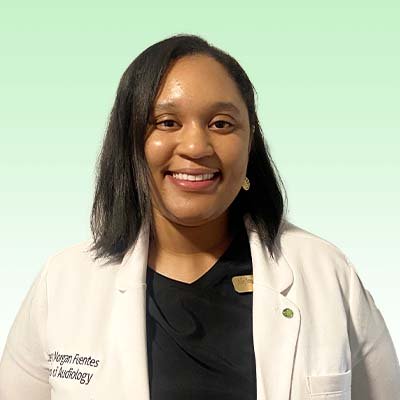As we enter May, we celebrate National Speech-Language-Hearing (NSLH) month. Communication in general is a crucial part of the human experience, whether that’s choosing to communicate verbally or non-verbally, in different languages, using sign-language, with assistive communication devices such as hearing aids or with augmentative and alternative communication (AAC) devices. Opportunities like NSLH month of May (and again in October for Audiology Awareness Month) allow us to share all the options and technology that is now available for effective communication.
Formerly known as Better Hearing and Speech month, this month-long acknowledgement was originally established by the American Speech-Language-Hearing Association (ASHA) in 1972. Before that, in 1927, there was a week known as National Hearing Week established by the Federation of Organizations for the Hard of Hearing. In 1958, it expanded to Better Hearing Month, finally being coined Better Hearing and Speech Month, in 1972. Just last year, ASHA revealed the new name of National Speech-Language-Hearing Month. In their press release, ASHA reported the new name is more inclusive of all manners of communication.
With this in mind, it is the perfect opportunity to review some fun facts regarding audiology and hearing loss, and suggestions for accommodations for those with hearing loss.
Audiology and Hearing Loss Facts:
- Sound exposure is the 2nd leading cause of hearing loss. This can result from one loud impulse sound or from continual sound exposure over time. This is why the World Health Organization (WHO) recommends limiting exposure to sounds above 85 decibels and using ear protection.
- If you think you are tired after a long day, imagine what your ears feel. Ears never stop working even when you are sleeping!
Among adults ages 20-69, men are almost twice as likely as women to have hearing loss. - Non-Hispanic white adults are more likely than adults in other racial/ethnic groups to have hearing loss; non-Hispanic Black adults have the lowest prevalence of hearing loss among adults ages 20-69.
- The ear’s malleus, incus and stapes (otherwise known as the hammer, anvil and stirrup) are the smallest bones in the human body. All three together could fit together on a penny.
- Instantaneous sound processing! The auditory system is remarkably fast, taking about 0.05 seconds for the brain to process a sound once it reaches the ears. This allows us to perceive and respond to sounds in real time.
- Have you ever wondered how you can focus on one conversation in a crowded room? This is known as the cocktail party effect. Our brains can tune in to a specific conversation while filtering out background noise.
- Did you know that taste and hearing have a connection? Research suggests that certain soundscapes can influence our perception of taste. For example, the sound of sizzling bacon can make it taste more flavorful!
- Approximately 3 million children have hearing loss. A mild hearing loss can cause a child to miss as much as 50% in the classroom.
- Hearing loss occurs in 5 out of 1,000 newborns. Make sure you get a Newborn Hearing Screening once your little one has arrived.
- Audiologists diagnose and treat more than just hearing loss! Many audiologists are proficient in vestibular/balance testing, as well as auditory processing disorder. There are even audiologists with dual degrees in audiology and speech-language pathology! There is also a special subset of audiologists that work in intraoperative monitoring.
- Accommodations you can ask for if you have trouble hearing (helpful for work, school, and medical appointments)
- Use of assistive listening devices such as hearing aids or pocket talkers
- Requesting video relay service or access to a captioned or text-based telephone
- Requesting closed captions during video communication and conferencing
- Asking for written instructions to follow along with or to reference at a later time
- Sign language interpreter, if that is the preferred mode of communication
- Requesting accommodations, like one-on-one face time with the teacher or sitting at the front of the room, for your child through an IEP.
- Requesting visual emergency communications such as flashing lights or vibrating pagers
- Preferential (front-row) seating during meetings or classes
- Asking speakers to wear a microphone to improve the signal-to-noise ratio
For more information, please see:
U.S. Equal Employment Opportunity Commission (EEOC)
National Deaf Center on Postsecondary Outcomes
*For a more holistic view on the statistics of hearing loss and social, educational, and medical effects, World Report on Hearing produced by the World Health Organization (WHO) in 2021 is an excellent resource.*https://www.who.int/publications/i/item/9789240020481
If you’re looking for a way to celebrate National Speech-Language-Hearing month, we suggest that you and a friend go for a complimentary hearing assessment! At HearingLife, we recommend hearing assessments start at age 50 to establish a baseline, but if you are struggling to hear, work in a noisy environment or just want to make sure your hearing health is in a good place, please schedule a complimentary hearing assessment with us any time.


